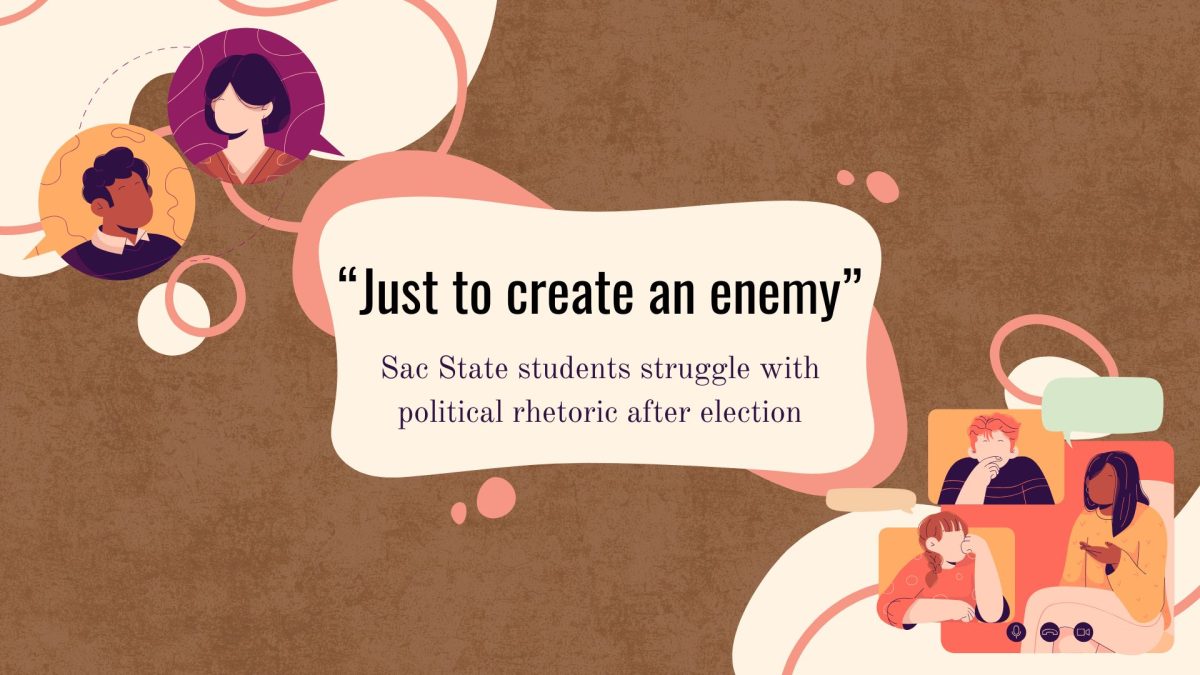Mural gets new life

Image: Mural gets new life:Sac State alumnus Juanishi Orosco does a little touch-up work Monday afternoon.:
August 31, 2001
A group of Sacramento State alumni, retired art professors and artists worked Thursday to re-imagine and touch-up a mural in a downtown park which sprung from the consciousness of an art collective formed more than 30 years ago.
Things have changed since the Royal Chicano Air Force used the Robert Emmet Callahan Memorial as a canvas for a celebration of community and culture in the mid-seventies.
Stan Padilla worked closely with his daughter, Nali DeLap, to put the finishing touches on his panel.
DeLap, who was a year old when the mural was done in 1977, touched up the molecules which frame the edge of the panel that depicts a butterfly rising from the flames.DeLap said she considers the opportunity to participate in the restoration of the mural a privilege.
“It?s a high honor to be able to work with these guys. To learn their styles and philosophies,” DeLap said.
Padilla, a multi-media artist, admits that he is a different person than he was 25 years ago, but the message of the mural is the same.
“I see it in a new way because I am a different person than the last time,” Padilla said. “For better or for worse, I am not sure.”
The mural was the brainchild of the Rebel Chicano Art Front and is located in Southside Park at the corner of 7th and T Streets. It consists of seven panels and each one features a different motif, but the recurring theme is a celebration of Mexican, Chicano, and Native American culture.
Jose Montoya, a retired Sac State art professor, said professors and students at Sac State formed the group in 1969. The group is now referred to as the Royal Chicano Air Force, due largely in part to the fact that the initials of the group were RCAF. Montoya said they were constantly being asked if they were part of the Royal Canadian Air Force.
Montoya, Padilla and others members of the collective, which included Sac State alumni Juanishi Orosco and Juan Cervantes and retired Sac State Art professor Esteban Villa, painted the seven panels that form the mural.
The offices of the RCAF used to be housed across the street in the Holy Angel School, and Montoya said that at the time the park was mainly filled with people drinking and using drugs.
But after the mural was completed, Montoya said, things changed.
“It had a very dramatic affect, people began to respect the park more,” Montoya said.Over the years the park has become a popular place for gatherings and celebrations, and the mural has taken quite a beating, Montoya said.
Montoya said that vendors involved in these events would go as far as to mount their signs on the mural.
“We didn?t expect the breweries to be so insensitive about artwork,” Montoya said.
Villa said that revisiting the mural nearly 25 years later brings things full circle.
“It?s like a cycle, because the original mural is around and the six of us our back,” Villa said.
Villa said it is difficult to explain why the artists work so well together in the RCAF.”We work as one ? but you know what? Every artist is different, yet we?re just one,” Villa said. “It?s a union of comradeship.”
The restoration effort, which started Aug. 20 and is expected to be completed this Friday, seems more like a group of friends and family getting together than work.
Cervantes worked with his brother, Ciro, on a scaffold, taping and re-painting his panel.Cervantes, who was one of Montoya?s students, said that working on the mural this time around is a lot easier because he knows what he is doing, before it was a trial by fire.
“You can learn theory at school, but this was on the job training,” Cervantes said. “Last time we didn?t know if would work, but now we know it does.”
Padilla went so far as to compare the latest meeting of the artists to a Beatles reunion.”We?re all in different directions, getting everyone back together has been great,” Padilla said.




























































































































